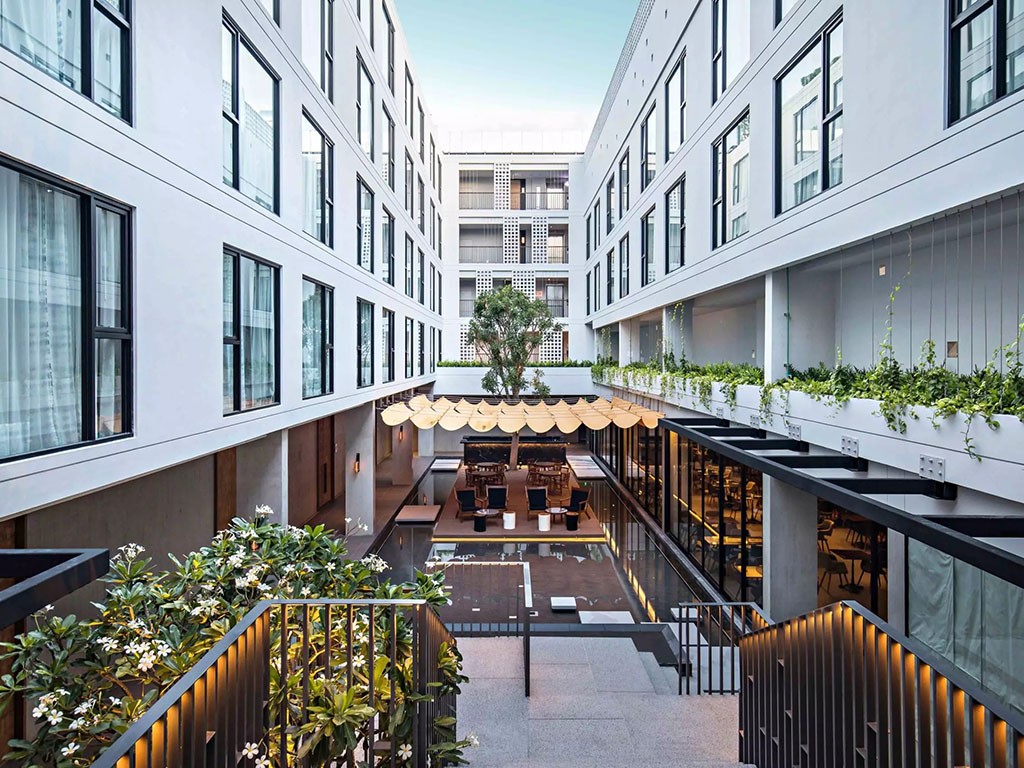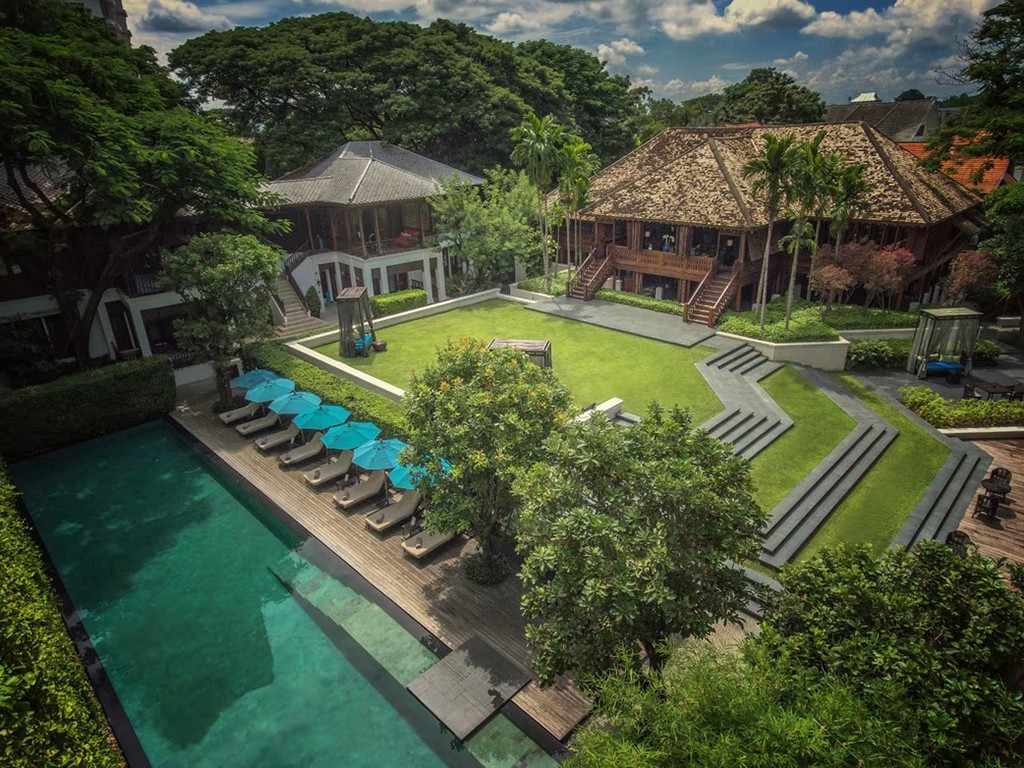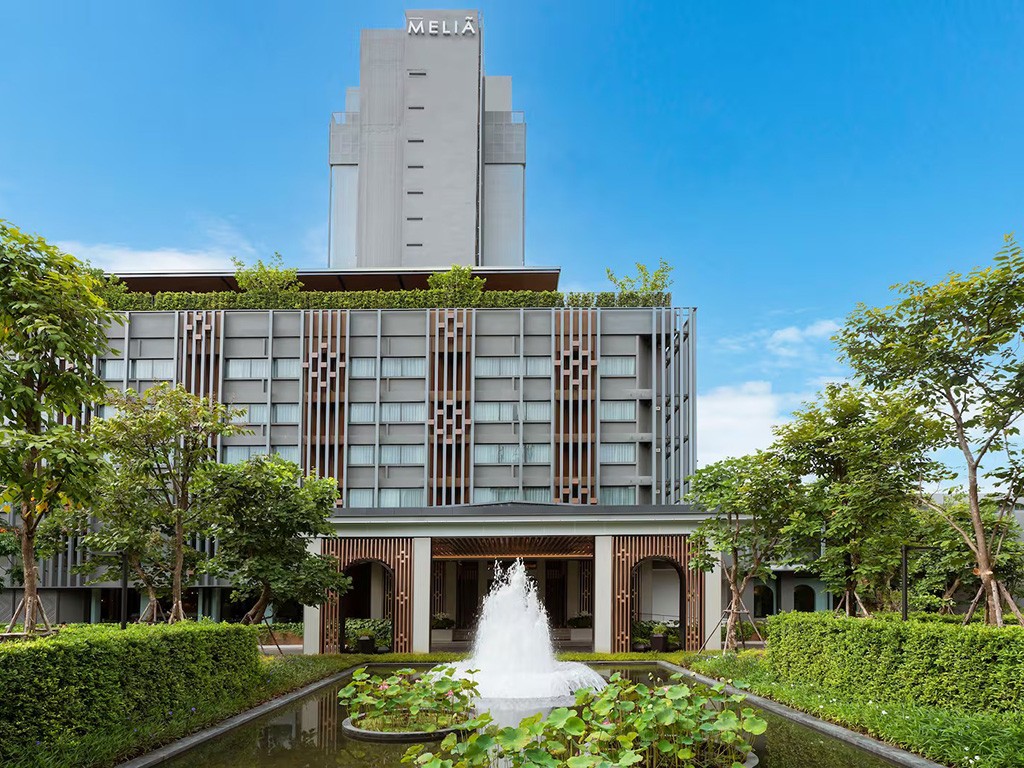“Wat Ched Yod stands out for its Seven-Spire Chedi modeled after Bodh Gaya in India and its historical significance as the site of the 8th World Recitation of the Tipitaka. It is also a sacred temple for people born in the Year of the Snake.”
Wat Ched Yod was originally called Wat Photharam Mahavihara and was built in 1455 during the reign of King Tilokarat, the 9th ruler of the Mangrai Dynasty, a golden era of the Lanna Kingdom.
Historical Monuments and Unique Architecture
Seven-Spire Chedi (Mahabodhi Temple):
- Inspiration: Modeled after the Mahabodhi Temple in Bodh Gaya, India, where the Buddha attained enlightenment. King Tilokarat commissioned Siha Khotsenabodi to study and bring back the design.
- Architecture: A square-shaped chedi with seven spires situated on a base structure, giving the temple its name “Wat Ched Yod.”
- Deva Assembly Stucco: The exterior walls are decorated with stucco sculptures of standing and kneeling angels, representing the Deva Assembly from ten thousand universes paying homage to the Buddha. The motifs show a mix of Lankā and Sukhothai artistic influences blended with local Lanna craftsmanship.
- Chedi Containing King Tilokarat’s Ashes: Located northeast of the main Chedi hall, built during the reign of King Yot Chiang Rai (son of King Tilokarat).
Historical and Religious Significance
- 8th World Recitation of the Tipitaka: In 1477 CE, the temple hosted the 8th World Recitation of the Tipitaka under King Tilokarat’s patronage, the first such event in Thailand.
- Seven Sacred Sites (Sattamahasathan): King Tilokarat ordered the construction of seven sacred sites corresponding to the seven weeks Buddha spent after attaining enlightenment, mirroring Bodh Gaya.
- Temple for the Year of the Snake: The Seven-Spire Chedi serves as the sacred relic for people born in the Year of the Snake.
How to Get There
By car/taxi:
- From Huay Kaew Road, turn right at Rin Kham Intersection (near Maya Mall) onto the Superhighway (Highway 11), then follow the signs to the temple.
Public transport:
- Local red trucks (Songthaew) in Chiang Mai city, ask to go to “Wat Ched Yod.”
Parking:
- Visitor parking available inside the temple grounds.
Travel Tips
-
Art appreciation: Examine the stucco angels around the chedi to appreciate Lanna-era artistic mastery.
-
Best time to visit: Morning to avoid the heat, as the chedi is an open-air heritage site.
-
Dress code: As a royal monastery and historical site, dress respectfully.
Admission Fee:
-
Free of charge
Opening Hours:
-
Open daily from 06:00 – 18:00








































